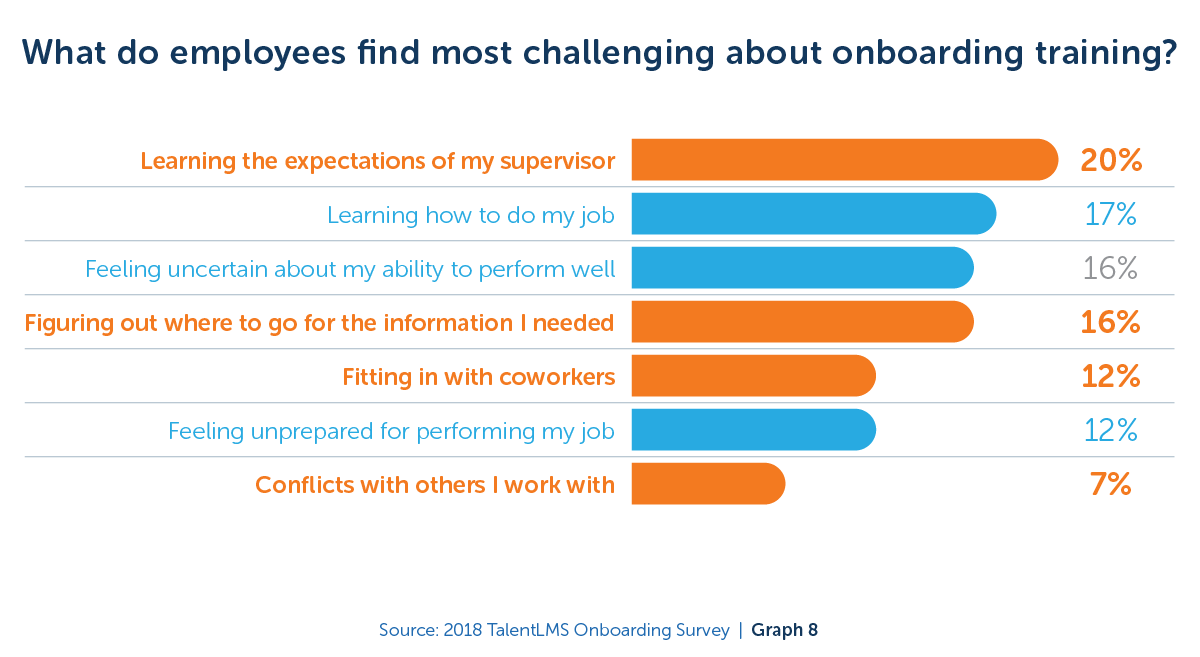Welcome to the world of employee onboarding! We understand the importance of gathering feedback from new employees during this crucial process. In this comprehensive guide, we will explore the power of employee feedback, why online surveys are the best choice for gathering feedback, how to design effective online surveys, and how to implement them in your onboarding process. Let’s dive in!
Click here for our informative guide to online employee onboarding!
The Power of Employee Feedback During Onboarding
As experts in the field, we know just how crucial it is to gather feedback from new employees during the onboarding process. This step is not just important; it’s essential for organizations looking to enhance their onboarding program and create a truly exceptional experience.
One of the key advantages of collecting feedback is that it allows companies to fine-tune their onboarding process. By understanding what aspects are working well and where improvements can be made, organizations can tailor their programs to meet the unique needs and expectations of each new hire. This personalized approach leads to a seamless transition for employees, boosting their satisfaction and engagement right from day one.
Employee feedback also plays a pivotal role in fostering job satisfaction and retention. When new hires feel heard and valued through surveys or other feedback mechanisms, they develop a positive perception of their employer. This positive experience contributes significantly to higher levels of job satisfaction, ultimately leading to improved employee retention rates.
By actively seeking out feedback during the onboarding process, organizations demonstrate their unwavering commitment to continuous improvement and creating a supportive work environment for all employees. It sends a clear message that open communication channels with new hires are highly valued right from the start.
In summary:
- Gathering feedback from new employees during onboarding is not just important; it’s essential for enhancing the overall onboarding process.
- Employee feedback has a direct impact on job satisfaction and retention.
- Actively seeking out feedback showcases an organization’s dedication to continuous improvement while fostering a supportive work environment.
Why Online Surveys Are the Best Choice for Gathering Feedback
We always recommend utilizing online surveys to gather feedback from new hires. These surveys offer a multitude of benefits that can significantly enhance your onboarding process and improve overall employee satisfaction and retention.
- Anonymity and comfort: One of the greatest advantages of online surveys is the sense of anonymity they provide for new employees. This creates a safe space where they can express their honest opinions without fear of judgment or repercussions. By fostering this environment, you are more likely to receive valuable insights that can help identify areas for improvement within your onboarding program.
- Efficiency and convenience: Conducting surveys online eliminates the need for manual data collection and analysis, saving both time and resources. With just a few clicks, you can distribute survey links to all new hires simultaneously, ensuring quick response rates. Additionally, these surveys can be accessed at any time from anywhere with an internet connection, making it convenient for employees to participate even if they are working remotely or have busy schedules.
- Versatility in question types: Online survey platforms offer a wide range of question types, such as multiple-choice options, rating scales, open-ended questions, and more. This versatility allows you to gather both quantitative data (e.g., ratings) and qualitative data (e.g., comments), providing a comprehensive understanding of your new hires’ experiences during the onboarding process.
- Simplified data analysis: Analyzing survey responses becomes effortless when using online survey tools equipped with built-in analytics features. These tools generate visual reports that highlight trends, patterns, and correlations within the collected data—empowering you to make informed decisions about refining your onboarding process based on real-time feedback.
Online surveys surpass traditional methods when it comes to gathering feedback from new employees during the onboarding process. Their ability to provide anonymity and comfort encourages honest responses, while their efficiency and convenience make them the practical choice for both employees and HR professionals. The versatility of question types allows for comprehensive data collection, and the built-in analytics features simplify the analysis process. By choosing online surveys as your feedback-gathering method, you can gain valuable insights to improve your onboarding program and ultimately enhance employee satisfaction and retention.

How To Design Effective Online Surveys for Onboarding Feedback
Designing highly effective online surveys to gather feedback from new employees during the onboarding process is a critical step in ensuring that you receive valuable insights and improve their experience. As experts in this field, we have compiled some essential tips to help you create engaging and comprehensive surveys:
- Craft clear and concise questions: When designing your survey, it is crucial to keep the questions clear, concise, and easily understandable by all respondents. Avoid using jargon or complex language that may confuse them. Instead, opt for simple and straightforward wording.
- Focus on specific topics: Rather than asking general questions about the onboarding process, focus on specific topics that will provide actionable feedback. For instance, inquire about their experience with orientation sessions, training materials provided, or their understanding of company policies.
- Utilize a mix of multiple-choice and open-ended questions: While multiple-choice questions are excellent for collecting quantitative data, don’t overlook the importance of including open-ended questions as well. These allow employees to share their thoughts in more detail and provide qualitative insights into their experiences.
- Incorporate Likert scale ratings: To accurately measure employee satisfaction levels related to the onboarding process, consider incorporating Likert scale ratings. This enables you to gauge how strongly they agree or disagree with certain statements.
- Keep surveys short yet impactful: Respect your employees’ time by keeping the surveys short while focusing only on essential aspects of the onboarding process. Lengthy surveys can lead to respondent fatigue and lower response rates.
- Test your survey before deployment: Prioritize testing your survey thoroughly before sending it out to ensure there are no errors or confusing wording present within it. Seek input from colleagues or trusted individuals outside of HR who can take the survey as if they were new hires and provide valuable feedback regarding its clarity and effectiveness.
- Provide an option for anonymous responses: To foster honest feedback without fear of repercussions, it is crucial to offer an option for anonymous responses within your online survey platform settings. This encourages employees to share their true thoughts and experiences.
- Enhance the survey experience with visuals: When appropriate, consider incorporating visual elements such as images or videos into your surveys. These can enhance the overall experience and make it more engaging for respondents. However, use visuals sparingly and only when they add value to the questions being asked.
- Use SurveyTown to easily take all the above-listed steps!
By following these expert tips, you will be able to design highly effective online surveys that provide valuable insights into your onboarding process. Remember, gathering feedback goes beyond collecting data; it’s about understanding your new employees’ experiences and continuously improving their journey with your organization.
Implementing Online Surveys in Your Onboarding Process
Here are some invaluable tips on how you can effectively implement online surveys and make your onboarding experience truly exceptional.
- Perfect timing: Timing is everything when it comes to surveys. Strategically schedule them at key points throughout the onboarding journey. Consider sending out a survey after the first week, another one after completing training, and a final survey after 30 days of employment. This allows your new hires to settle in and reflect upon their experiences.
- User-friendly survey tools: Don’t let complicated software hinder your progress! Choose user-friendly platforms like SurveyTown that offer customizable templates tailored specifically to your organization’s needs. Look for features like drag-and-drop functionality, pre-designed question templates, and options for branding customization.
- Clear communication: Let your new employees know why their feedback matters and how it will be used to enhance their experience within the company. Emphasize that their opinions are valued and assure them of anonymity if desired.
- Encourage honest input: Foster an environment where honesty thrives! Create a safe space where new hires feel comfortable providing honest feedback without fear of repercussions or judgment. Assure them that their responses will remain confidential, encouraging open communication.
- Seek suggestions for improvement: In addition to specific questions, give your employees a chance to provide suggestions for improvement. This shows that you genuinely value their input and are committed to making necessary changes.
- Review and analyze regularly: Once the surveys are complete, it’s time to dive into the feedback! Take the time to thoroughly review and analyze the responses. Look for common themes or patterns that emerge – they can highlight areas of strength or areas in need of improvement.
- Take action: Feedback without action is like a compass without direction. Act upon the feedback received from new employees promptly. Address any concerns or issues raised and make improvements accordingly. Communicate with your team about changes implemented based on employee feedback, showcasing your dedication to creating a positive onboarding experience.
By incorporating online surveys into your onboarding process, you not only gain valuable insights but also create an environment where new hires feel heard and valued right from day one. This proactive approach fosters engagement, satisfaction, and retention among employees while continuously improving your organization’s onboarding practices.
So why wait? Start implementing online surveys today and witness firsthand how they revolutionize your onboarding process!
Analyzing and Utilizing the Feedback
Congratulations on successfully gathering feedback from your new hires using online surveys during the onboarding process! Now, it’s time to unlock the full potential of this valuable information. In this section, we will guide you on how to effectively analyze and utilize employee feedback to drive improvements in your organization.
- Analyzing the feedback: Unveiling insights
- Dive deep into each response: Take a moment to thoroughly review every survey response, paying equal attention to both quantitative data and qualitative insights.
- Spotting patterns and trends: Look for recurring themes or issues that emerge across multiple responses. These patterns will help you identify areas where enhancements can be made.
- Embracing individual perspectives: While searching for commonalities, don’t overlook the unique experiences shared in open-ended questions. These personal anecdotes offer invaluable viewpoints.
- Leveraging feedback for enhanced onboarding:
- Addressing specific concerns raised: If certain issues are consistently mentioned in employee feedback, prioritize addressing them promptly. This demonstrates your commitment to creating an exceptional onboarding experience.
- Implementing changes based on suggestions: When employees provide suggestions for improvement, seriously consider implementing those changes whenever feasible. It shows that their opinions matter and fosters a culture of continuous growth.
- Celebrating positive feedback with relevant teams: Don’t forget to share positive comments or success stories with departments or individuals involved in the onboarding process. Recognizing their efforts boosts morale and encourages further excellence.
- Communicating changes effectively:
- Keeping employees informed about actions taken: Once you have analyzed the feedback and made necessary adjustments, communicate these changes back to your team members who participated in providing input via surveys.
- Explaining decision-making processes clearly: Transparency is crucial when communicating changes resulting from employee feedback. Provide concise explanations as to why specific actions were taken so that everyone understands the reasoning behind them.
- Expressing gratitude for their contribution: Show appreciation to your new hires for taking part in providing valuable feedback during their onboarding journey. Let them know that their voices truly matter and have made a significant impact.
By effectively analyzing and utilizing the feedback received from online surveys, you can continuously enhance your onboarding process. Remember, employee feedback is an invaluable resource for boosting engagement, satisfaction, and retention within your organization. Embrace this opportunity to create a workplace where every voice is heard and valued.





